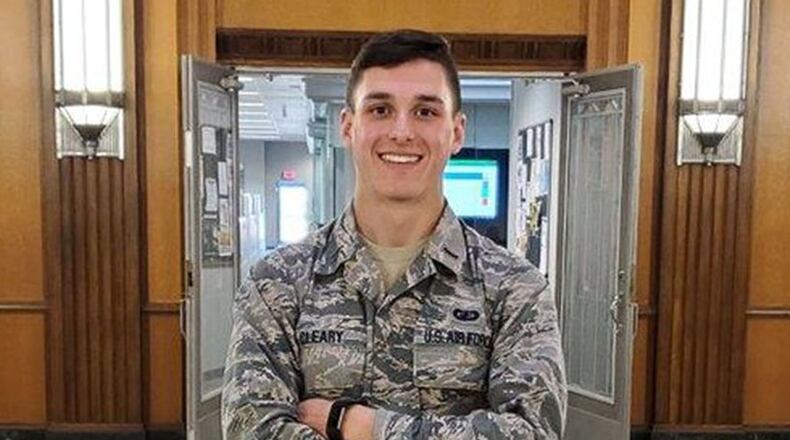Coming from a family with a tradition of service in the Army, Air Force and Navy, the Sugar Land, Texas, native knew he wanted to serve in the military after college but was not sure which branch to enter. After doing some research, he learned that the Merchant Marine Academy offered the unique opportunity to commission into any branch following graduation. This was a driving force that made him choose to attend USMMA.
Founded in 1943, the academy trains its midshipmen to be licensed civilian officers on U.S. flagged merchant vessels while serving as reservists in the Navy or as active-duty officers in any branch of the military.
While at the academy, Cleary majored in Maritime Logistics and Port Security and spent a lot of time at sea.
“I was at sea for a year, sailing primarily on large ships,” Cleary said. “It was non-stop. If I wasn’t at sea, I was at school.”
One of the vessels he sailed on was a roll-on/roll-off ship.
“It was a big ship and very tall,” said Cleary. “Having a gross tonnage of over 57,000 tons, the M/V Liberty Promise had 12 cargo decks where you stow vehicles, cars, tanks, tractors, trains, trailers, Humvees, MRAPS and various miscellaneous cargo. We went around the world, to multiple locations in Europe, the Middle East and Asia, dropping off cargo and picking cargo up to bring back to the states for repair. Our primary customers were the Army and Air Force, and seeing them come to the ship to receive their cargo was a humbling experience for me. Going through the Suez and Panama Canals, and crossing the Atlantic, Indian and Pacific Oceans were great experiences.”
On the ship, Cleary assisted on watch in the command section, more commonly known as the bridge.
There he was responsible for looking out for other ships, manning the radio systems, monitoring the weather, checking the radar and making sure the ship didn’t hit anything and that it stayed on course and on schedule.
While the ship was in port, Cleary was responsible for managing the loading and unloading of cargo.
“When you are loading stuff, you have to make sure that it gets on and is stowed properly and tied down correctly,” said Cleary. “Otherwise if we go into a low pressure system where we are getting rocked around in the middle of the ocean, you don’t want that stuff coming loose because then you could lose your stability and the ship could capsize.”
Currently, he is a fully licensed third mate and is authorized to be the navigational watch officer of just about any ship in the world.
During his junior year at the academy, Cleary made the decision to commission into the Air Force.
Cleary said that there were similarities between his work on a ship as a cadet and now as an Air Force program manager.
“As a program manager, you are trusted with the responsibility of being in charge of a program to include having to speak to the schedule, to the cost, to the performance of that program and ultimately down the line, people are counting on you,” said Cleary. “And as a 19-year-old cadet, I was responsible for keeping the ship on schedule and on-track at sea and conducting cargo operations in port, and with 20 other crew members, everyone counted on each other to make the right decisions to keep the ship afloat.”
Working in the Egress and Survival Branch within the Human Systems Division, Cleary is leading efforts responsible for modernizing the survival kit located in the ACES II ejection seat.
“Basically, what we are doing is looking at how to modernize and increase the functional capability of the survival kit that is currently on our F-22s, F-15s and F-16s,” he said. “It is my responsibility to make sure it has the best capability that it can possibly have.”
About the Author
